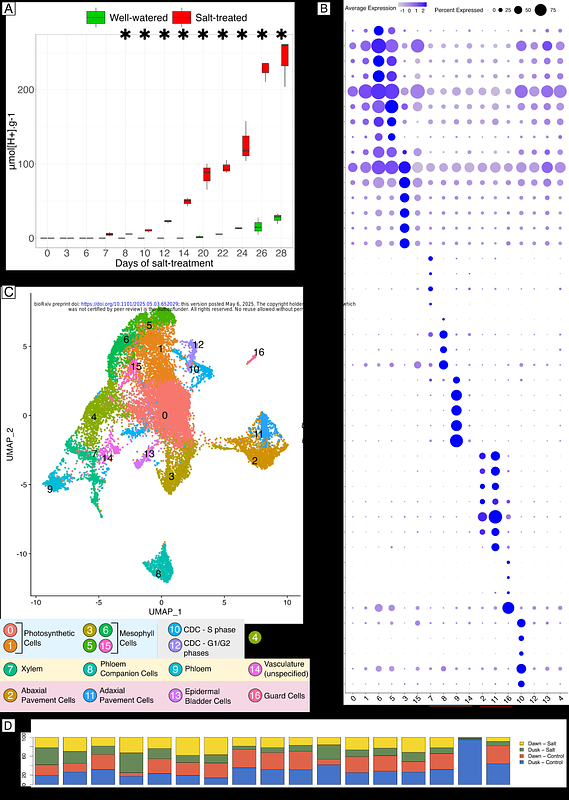A Circadian Light Regulator Controls a Core CAM Gene in the Ice Plant's C3-to-CAM Transition

A Circadian Light Regulator Controls a Core CAM Gene in the Ice Plant's C3-to-CAM Transition
Perron, N.; Le, T.; Dervinis, C.; Pereira, W. J.; Barbazuk, W. B.; Kirst, M.
AbstractCrassulacean acid metabolism (CAM) enhances drought tolerance by shifting carbon fixation to the night, improving water-use efficiency compared to C3 and C4 photosynthesis. However, the molecular regulators of CAM induction remain poorly understood. Here, we generate the first single-nucleus transcriptome atlas of a CAM species, Mesembryanthemum crystallinum, to resolve transcriptional dynamics at the cell-type level during the C3-to-CAM transition. Using snRNA-seq and a 24-hour time-course bulk RNA-seq dataset, we identify PPCK1, a key CAM enzyme regulator, as part of a co-expression network enriched in circadian clock genes and salt-induced pathways. We demonstrate that the ice plant HY5 (McHY5) directly activates PPCK1, a function absent in the C3 model species Arabidopsis thaliana. This discovery reveals a fundamental divergence in transcription factor activity between a CAM and a C3 species, suggesting that CAM evolution in M. crystallinum involved a rewiring of core regulatory elements underlying CAM. Identifying a transcription factor that directly controls a major CAM gene provides a key step toward decoding CAM regulatory architecture and opens new avenues for engineering drought-resilient crops.